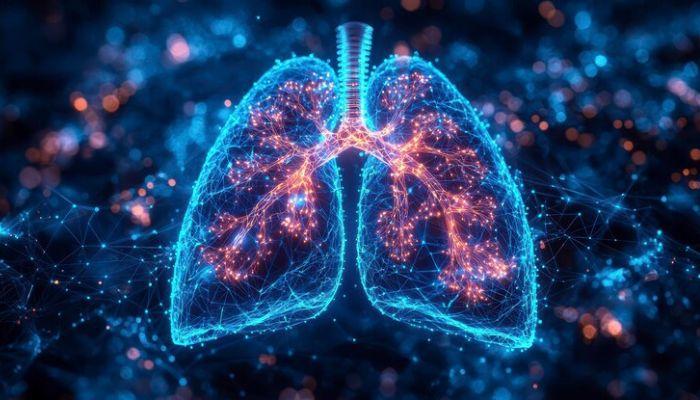Pleurisy is a painful condition affecting the lining around the lungs, wherein sharp chest pain is mostly felt during breathing. Although it is scary sometimes, pleurisy is treatable given time and proper care. This detailed article looks at treatment for pleurisy, its causes, symptoms, complications, and the widely asked-about healing duration.
Knowing the best treatment for pleurisy can speed up one’s recovery and improve lung health, whether you are having symptoms or researching for someone close to you.
What is Pleurisy?
Pleurisy, or pleuritis, is an inflammation of the pleura-the thin layers of tissue that separate the lung from the chest wall. Usually, these thin layers glide smoothly with each breath. When inflamed, however, they rub against each other incurring sharp chest pains, mainly on breathing or coughing.
Also Read: White Tea: A Delicate Sip with Powerful Health Benefits
Common Causes of Pleurisy

Understanding what causes pleurisy is the first step in finding the proper treatment for pleurisy. The condition may arise due to:
Getting to know what causes pleurisy is the first thing to consider in treating it. Pleurisy might be caused by:
1. Viral Causes
Usually occurring as a sequel of respiratory infection viruses like the flu.
2. Bacterial Causes
Pneumonia and tuberculosis caused by bacteria are causes of pleural inflammation.
3. Pulmonary Embolism
Blood clot in the lungs could irritate the pleura and cause pleurisy.
4. Autoimmune Disorders
Lupus or rheumatoid arthritis that inflames the pleura.
5. Lung Cancer or Tumors
Rarely, the tumors might press against or involve the pleura.
6. Chest Injuries
Blunt trauma or rib fractures can also cause pleurisy.
In every one of these, it is required that the treatment for pleurisy depends on the primary cause.
Signs and Symptoms
The chief complaint with pleurisy is sharp, stabbing chest pain. Others include:
- Pain is aggravated during breathing in or while coughing
- Shortness of breath
- Dry cough
- Fever (if infection is present)
- Back or shoulder pain
Symptoms, however, may differ according to the root cause, severity, or other medical conditions.
Diagnosis of Pleurisy
Proper diagnosis makes proper treatment for pleurisy. Medical professionals can recommend the following tests:
- Chest X-ray – Detect infections or fluid buildup.
- CT Scan – Provides detailed imaging of the lungs and pleura.
- Ultrasound – Detects fluid between pleural layers.
- Blood Tests – To identify infections or autoimmune diseases.
- Thoracentesis – A procedure to remove and analyze fluid from the pleural space.
Once diagnosed, a suitable treatment for pleurisy can begin.
Pleurisy Treatment: A comprehensive view
The treatment for pleurisy will vary depending on the cause of pleurisy. Treatment can consist of medications, lifestyle modifications, others, or supportive therapy. Let’s look at each kind of therapy.
1. Pleurisy Medicines
A. Anti-inflammatories
These drugs include ibuprofen and naproxen. These are often used for both inflammation and pain.
B. Antibiotics
If the cause of the infection is bacterial, as in pneumonia or tuberculosis, the treatment of choice is antibiotics. The doctor may prescribe broadspectrum antibiotics while waiting for test results.
C. Antivirals
Rarely, severe influenza and other viral illnesses may necessitate antiviral therapy.
D. Corticosteroids
And, if pleurisy is autoimmune, high-dose corticosteroids such as prednisone are also prescribed to you which help to keep the immune system in control and may help to reduce the inflammation inside
E. Anticoagulants
For pleurisy that is caused by pulmonary embolism, anticoagulants will be required in the form of warfarin or heparin.
2. Drainage Procedures
If pleurisy results in a significant accumulation of fluid within the pleural cavity (pleural effusion), that fluid must be removed to remove the source of the continued accumulation.
A. Thoracentesis
Fluid is extracted using a needle. This might also help release pressure and make breathing more comfortable.
B. Chest Tube Insertion
In cases of substantial fluid buildup, a tube may be placed to provide a continuous drain of the pleural space.
These procedures are an important part of advanced treatment of pleurisy in cases of significant complications.
3. Pain Management
The management of pleurisy requires immediate pain control as a fundamental treatment approach. Patients who experience severe pain may receive stronger painkillers such as codeine or tramadol in addition to NSAIDs. Intercostal nerve blocks (injections between the ribs) are rarely used for persistent pain.
4. At-Home Treatment and Lifestyle Tips
Though drugs are the main treatment for pleurisy, home remedies can hasten recovery:
- Rest: To rest the lungs and avoid overworking them, rest and avoid over exertion.
- Warm Compresses: Relieve pain and Comfort chest muscles.
- Breathing Exercises: Maintain full breaths to avoid lung atelectasis by taking shallow breaths.
- Hydration: It can help decrease lung congestion and thin the mucus.
- Standing: Sleeping in an upright position can help with breathing discomfort.
Traditional medical care and home care to recover completely.
5. Treatment for Underlying Diseases
The main illness needs to receive first-line treatment when pleurisy develops as a result of lupus, arthritis or cancer.
- Immunosuppressants for autoimmune diseases
- Chemotherapy or radiation for cancers
- Surgery for tumor removal or drainage
Addressing the leading cause is the most important effective treatment for pleurisy.
How Long Does It Take to Heal from Pleurisy?
This is one of the most common concerns among patients. The healing time for pleurisy depends on several factors:
| Cause |
Average Recovery Time |
|---|---|
| Viral Infection | 1–2 weeks |
| Bacterial Infection | 2–4 weeks (with antibiotics) |
| Autoimmune Disease | Weeks to months |
| Pulmonary Embolism | Several weeks |
| Pleural Effusion | 2–6 weeks after drainage |
| Cancer-Related | Varies by case |
Key Factors Affecting Healing:
- Early diagnosis
- Prompt and proper treatment
- Overall immune health
- Presence of other lung or heart conditions
Most mild cases of viral pleurisy resolve within one to two weeks, especially with rest and NSAIDs. More complex cases, such as pleural effusion or pleurisy of autoimmune-related pleurisy, may need weeks to months of treatment.
Complications if Left Untreated
Early treatment for pleurisy is key to prevent possible complications:
- Pleural effusion (fluid buildup)
- Empyema (pus or infected fluid collection)
- Atelectasis (collapsed lung)
- Fibrosis (thickening and scarring of the pleura)
- Respiratory failure (rare but life-threatening)
If you are having increasing difficulty breathing, a high fever or tightness in your chest, get emergency treatment.
Preventive Considerations for Pleurisy
Although not all the causes can be prevented, keep in mind that certain risks can be reduced by:
- Pneumonia and flu vaccination
- Quit smoking
- Keeping autoimmune conditions under control through regular check-ups
- Wearing a mask whenever in the company of respiratory infection
- Give prompt medical treatment for chest injuries
Following these preventive measures may lead to lower chances of having pleurisy and good effect on treatment for pleurisy is needed.
FAQs
Q1. Does pleurisy ever go away on its own?
A: In any mild viral pleurisy, it can resolve itself naturally, but treatment is to try and manage pain and prevent complications.
Q2. Is pleurisy contagious?
A: Pleurisy is not contagious, although the underlying causes of it — like the flu or TB — may be.
Q3. Can pleurisy come back?
A: Yes, especially if the reason for the fever, such as lupus or frequent infections, is not under good control.
Q4. What if I’m Sick?
A: Individuals should visit a healthcare facility when they experience persistent chest discomfort together with breathing difficulties or elevated body temperature.
Conclusion
Pleurisy is usually manageable if diagnosed and treated early. An infection, autoimmune disorder, trauma, or simply no known cause, no matter what the reason for pleurisy, a customized pleurisy treatment using meds, drainage techniques, and supportive care can often get the person over without a hitch.
Symptoms are alleviated for most people within 1 to 4 weeks, but more severe and complicated causes require long-term treatment. Diagnosed at the onset and the patient follows the treatment, future complications will be minimized. Talk to your healthcare provider and follow your treatment plan, if you experience symptoms that are consistent with pleurisy or if you are recovering from an episode. With an proper plan in place, healing is expected.



